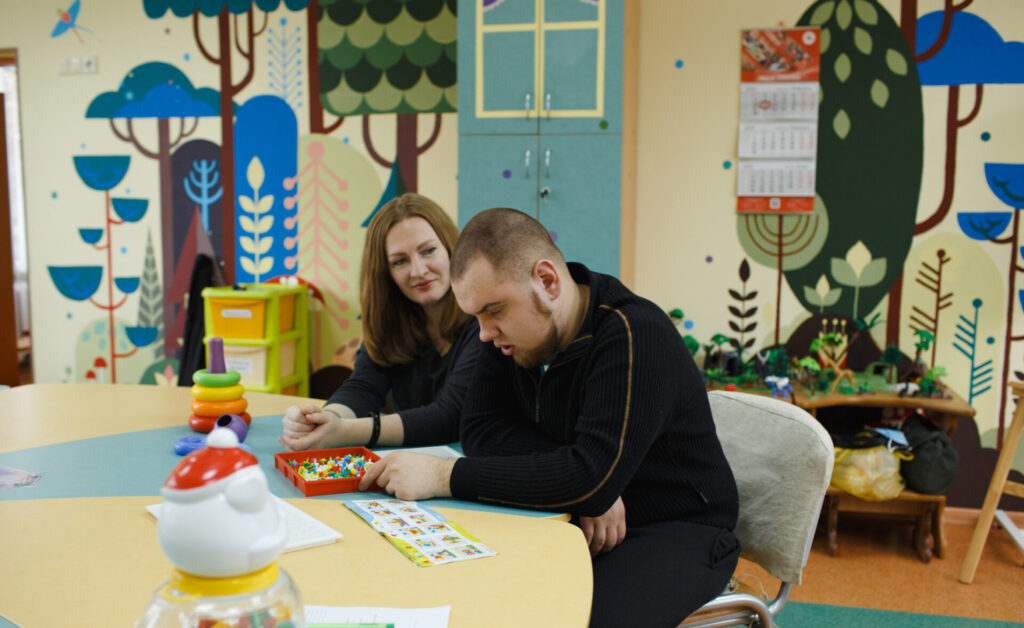Life transitions aren’t always easy – especially for people who’ve spent time in institutional care. Leaving a familiar support setting can bring a mix of emotions: uncertainty, anxiety, and the pressure of adapting to something new.
Families and carers feel it too. They’re part of the journey, adjusting alongside the person and helping to make sense of the changes ahead.
What makes a difference is having the right support in place. When health and social care teams, families, and the person themselves come together to plan that next step, it creates a foundation for something more stable and hopeful.
At the heart of any transition is the person. Their voice, their choices, and what matters most to them should guide every decision.
Тhe Importance of a Successful Transition From Hospital to Community Care
A successful transition from hospital to community care is vital for ensuring the well-being and long-term health of people leaving a hospital setting. This process involves much more than just moving from one place to another; it requires a comprehensive approach that addresses the person’s medical, mental, emotional, and social needs.
For people with multiple care needs in complex situations, such as autistic people, people with a learning disability and/or mental health needs – effective community transitions are crucial.
When we think about what makes a transition truly effective, it helps to reflect on the following:
- Why is it important to make this move from hospital to community care as smooth as possible for someone’s recovery and overall well-being?
- How can a well-supported transition reduce the likelihood of going back into hospital and contribute to greater stability in the long term?
- What difference does clear and consistent communication between hospital staff, care teams, and families make during this period of change?
- In what ways can a carefully planned move support someone to regain their independence and enjoy a better quality of life within their home or community setting?
- What kinds of challenges might come up during this shift – and how can forward-thinking, person-led planning help address them?
Ongoing support and personalised care plans are necessary to thrive in a community setting. By prioritising person-centred care and involving multidisciplinary teams, healthcare providers can collaborate closely with the person and their family to create a care plan that meets their unique needs. This teamwork not only supports the person’s recovery but fosters a shared understanding among all involved, leading to better outcomes and a more sustainable care model.
Our Community Psychiatric Nurses (CPNs) play a crucial role in facilitating successful community transitions. These specialised nurses work closely with people who have mental health needs, providing them with ongoing support as they move from hospital care to community living. Their expertise and close involvement make them invaluable in achieving a smooth and successful transition, helping people to settle into their homes with the confidence and care they need.

Key Components of a Successful Community Transition
A successful community transition hinges on several key components that work together to ensure the person’s smooth and sustained adjustment from hospital to home. These components are essential for addressing immediate needs during the transition process and laying the groundwork for long-term health and well-being. Effective discharge planning, personalised care plans, interdisciplinary collaboration, person-centred care, appropriate home care, and housing accommodations are all critical elements contributing to a successful transition.
Early and Comprehensive Discharge Planning
Early and comprehensive discharge planning is the cornerstone of a successful transition from hospital to community care. This planning process begins as soon as a person is admitted to the hospital, with healthcare providers and social care teams working together to identify the person’s needs, preferences, and potential challenges they may face upon discharge. By starting the discharge planning process early, there is ample time to coordinate with community health services, arrange for any necessary equipment or support, and involve the person and their family in the decision-making process. This proactive approach reduces the likelihood of last-minute complications and ensures that everything is in place for a smooth transition.
Moreover, comprehensive discharge planning involves thoroughly assessing the person’s medical, psychological, and social needs. It requires close collaboration between hospital teams, community care providers, and other relevant stakeholders to ensure continuity of care. The discharge plan should include clear instructions for follow-up care, medication management, and ongoing therapies or interventions.
Personalised Care Plans
Personalised care plans are vital to ensuring that the person’s unique needs are met during their transition from hospital to community care. These plans are tailored, taking into account their specific health conditions, personal preferences, and social circumstances. A well-crafted care plan results from collaborative discussions between the person, their family, and a multidisciplinary team of healthcare providers. This personalised approach ensures that care is relevant, effective, and aligned with the person’s goals and aspirations.
Developing a personalised care plan involves a detailed assessment of the person’s health, needs, living situation, and support network. The plan should outline the specific interventions, services, and support needed to help the person maintain their health and well-being in the community setting. It may include regular visits from healthcare professionals, adjustments to the home environment, and connections to community resources that promote independence and social engagement.
Interdisciplinary Collaboration
Interdisciplinary collaboration is a key factor in the success of community transitions from hospital care. This approach involves bringing together healthcare professionals from various disciplines—such as doctors, nurses, social workers, occupational therapists, and mental health specialists—to work closely as a team. Each professional brings their own expertise to the table, contributing to a holistic understanding of the person’s needs and ensuring that all aspects of their care are considered. By collaborating, these teams can develop comprehensive care plans that address the person’s medical, psychological, and social needs, leading to more effective and coordinated care.
Effective interdisciplinary collaboration also promotes better communication among all parties involved, including the person and their family. Regular meetings and shared decision-making processes help ensure everyone is on the same page, reducing the risk of misunderstandings or gaps in care. This collaborative effort enhances the quality of care provided and fosters a shared responsibility for the person’s successful transition and long-term well-being.
Person-centred Care
Person-centred care lies at the core of successful community transitions. It focuses on each person’s unique needs, preferences, and values, moving away from a one-size-fits-all approach to a tailored, responsive way of working. This means treating people with dignity and respect while actively involving them in planning and decisions about their care—empowering them to take control of their health and well-being.
By prioritising this approach, healthcare providers can develop care plans that truly reflect a person’s goals, cultural background, and emotional needs. This not only increases satisfaction but also supports better health outcomes. When people feel heard and supported, they’re more likely to engage fully with their care and thrive in community living.
Innovative technology practices, such as personalised avatars and social stories, are increasingly used to facilitate smoother transitions. These multimedia tools help people better understand changes in their care, reduce anxiety, and build confidence in moving forward.
Home Care and Housing Accommodations
A safe and stable place to live is one of the most important foundations for recovery, independence, and quality of life. For people leaving hospital or institutional care, the move back into the community can feel overwhelming – especially if housing isn’t yet in place or everyday routines are hard to re-establish. The right home environment can ease this transition, offering a sense of continuity, calm, and dignity during a period of change.
For some, returning directly to long-term accommodation may not be possible or appropriate straight away. In these moments, temporary housing solutions and community-based support can help bridge the gap – offering people the time, space, and support they need to adjust safely.
As part of our commitment to supporting successful transitions, we offer community-based support and temporary accommodation in transition homes for people with:
- Autism
- Learning disabilities
- Mental health needs
- Eating disorders
Our transition homes are thoughtfully designed to feel welcoming and supportive. Alongside personalised care, we work in partnership with each person, their families, and professional teams to create a plan that supports long-term stability and well-being in the community.
Community Transition Services with Nurseline Community Services
At Nurseline Community Services, we provide specialised community transition support and temporary accommodation designed to help people move smoothly from hospital or institutional care back into the community. Our approach is tailored to meet the needs of people requiring:
- Personalised community transition support
- Short-term or long-term community support
- Urgent crisis support
- Temporary placements
Our dedicated multidisciplinary team includes experts from a range of fields to provide comprehensive support tailored to each person’s unique needs. This team brings together:
- Multimedia and communication specialists who help enhance understanding and expression through tailored communication tools.
- Positive behaviour support specialists who work to develop strategies that reduce distress and encourage positive interactions.
- Community psychiatric nurses who provide ongoing mental health care and support during the transition period.
- Registered mental health nurses who offer clinical expertise and ensure a consistent approach to health and wellbeing.
Together, we work alongside each person, their family, and local professionals to ensure the transition is not only safe and structured – but also centred on what matters to them.
A prime example of our impact can be seen in a recent case where we assisted a person with complex mental health needs in transitioning from nearly three decades of hospital care to supported living. Through early discharge planning, collaborative interdisciplinary efforts, and ongoing person-centred care, we created a safe and supportive environment that allowed the person to thrive in their new community.
If you want to learn more on how we can support you, contact us today.






